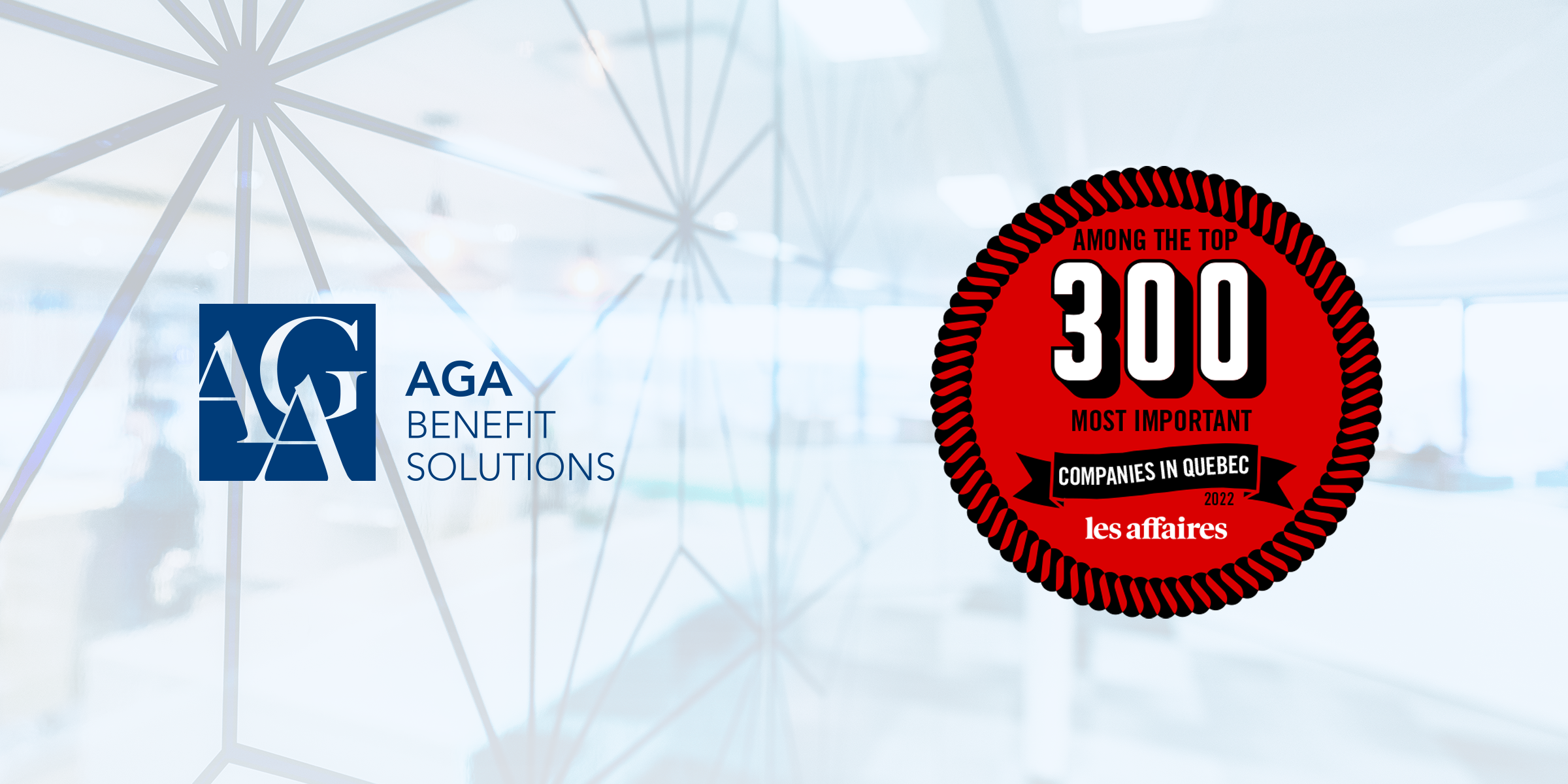The Crucial Link Between Absence Management and Employee Well-being
The Importance of Proactively Managing Absenteeism and the Outcome of Improved Employee Wellness
What role do group benefits play in the health and well-being of employees? How can organizations optimize their group plans to meet employees’ diverse and evolving needs?
These are just some of the questions AGA’s Vice President of Consulting, Underwriting and Actuarial, Massimo Nini, explored in a recent Benefits and Pensions Monitor webinar as he presented on the crucial link between absence management and employee well-being.
Nini was joined at the virtual event by Rami Halabi, Medical Science Liaison at Novo Nordisk Canada, who presented on the topic of obesity—a chronic disease impacting a growing number of Canadians that calls for greater understanding and support from employers.
In this article, we share key takeaways and insights to help better understand the importance of your group benefits in improving both the well-being of employees and the productivity and success of the companies they work for.
An Evolving Approach to Absence Management
When it comes to absence management, Nini noted there has been a significant shift in recent years from employers focusing on cost containment to taking a more comprehensive view of employee well-being and preventing issues before they arise.
This approach not only benefits employees but is equally good for business. A healthy and engaged workforce has a positive impact on everything from employee recruitment and retention to morale and productivity.
Understanding the Overall Health of an Individual
The lasting impact of the pandemic on Canadian society, as in most areas of the world, can’t be understated. Business closures, job losses, rising inflation rates and a volatile housing market have affected Canadians’ physical, mental and financial well-being in powerful ways.
These three pillars are key to understanding the overall health of an individual, and all of them need to be carefully considered by employers when it comes to the group benefits coverage they provide.
Physical Health
In the 2022 Benefits Canada Healthcare Survey, around 58% of participants said they had been diagnosed with at least one chronic disease or condition, with a mental health condition such as depression or anxiety cited as the most common (22% in 2022). Interestingly, participating plan sponsors estimated that just 35% of their employees are living with a chronic condition and/or pain.
Underestimating employee health comes with a clear cost. According to the 2022 Manulife Wellness Report, 48.1 days per employee were lost on average in Canada due to health-related absences and presenteeism and this number has been on the rise in recent years.
Mental Health
In the post-pandemic era, the mental health of working Canadians continues to be strained. According to the TELUS Health 2023 Mental Health Index, 32% of Canadians today have a high mental health risk, which is considerably higher than the 14% before the pandemic. The report also showed that 50% of people who return to work after a break to take care of their mental health experience a relapse.
Financial Health
Unsurprisingly, financial stress is a major health concern, with many Canadians feeling overwhelmed by debt and worried about their financial future. The 2023 FP Canadian Financial Stress Index shows that 2 in 5 Canadians say money is their top source of stress. The rising cost of groceries is the top external factor impacting their financial stress (69%), with other factors including inflation, rising interest rates, mortgage rates and gas costs.
All of these insights highlight how important it is for employers to reevaluate their group benefits plans to reflect the unprecedented rise in health conditions. COVID-19 has fundamentally changed how businesses assess, manage and mitigate risk, and employers need to meet those challenges head-on.
5 Steps to Effectively Manage Absenteeism
Nini outlined five key strategies during the webinar for employers to develop more effective absence management strategies:
- Know the numbers. Group plan sponsors need to better understand claims and spend data to properly assess the current state of their benefits programs.
- Invest smarter. Organizations need to rebalance investment to make sure all physical, mental and financial health needs are covered and to ensure their dollars are being spent in the right places.
- Educate and communicate. Employers need to educate themselves on the nuances of their benefits plans and communicate them in clear, comprehensive ways to employees (e.g. enhance communication materials, organize webinars and survey employees to make sure they understand their benefits).
- Bridge the gap for small- and medium-sized enterprises (SMEs). 98% of Canadian businesses employ less than 100 employees and 1/3 of the workforce are employed by these companies. Many SMEs do not offer any short-term absence benefits and their overall employee benefit offerings tend to be less generous on average compared to other market segments.
- Optimize the absence management process. Organizations need to reassess their current approach and develop tailored strategies to meet the diverse needs of the workforce. Employers that rely on Employment Insurance (EI) Accident & Sickness benefits should ensure that employees are receiving adequate support during their absence period considering that EI benefits now extend to 26 weeks.
Nini further noted that “most plan members are not very benefits literate. While most are aware they have a benefits program, many are unclear about the specifics. This lack of awareness can lead to underutilization of the benefits, which is particularly concerning considering employers often invest a significant portion of payroll (around 5% to 6%) into these programs.”
A key recommendation he shared is to centralize all benefits material on a single platform, making it easier for employees to understand and access their benefits. Plan sponsors should develop a robust communication strategy and conduct surveys regularly to keep up with employee needs and preferences.
“Regularly reviewing and adjusting the parameters of these programs is essential to ensure they remain effective and relevant,” added Nini. “Organizations should be vigilant in assessing and potentially revising their benefit structures, especially in light of economic changes like inflation, to ensure their employees' health and wellbeing are adequately supported.”
Employee benefits are crucial to recruiting talented individuals, supporting employee well-being and enhancing productivity. Plan sponsors allocate material sums to employee benefit programs; they need to ensure they are maximizing their benefits dollars and that the offering is well understood by plan members. Contact your AGA advisor to strategize about your employee benefits programs.







